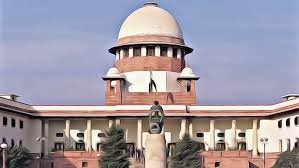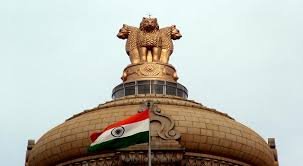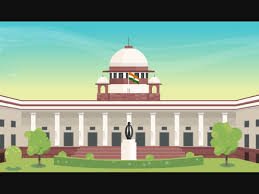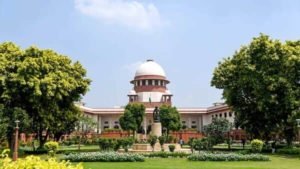The case originated from a motor accident where the deceased succumbed to injuries, leading their legal heirs (the claimants, Kamlesh and Others) to file a claim before the Motor Accident Claims Tribunal. The Tribunal initially awarded a compensation of Rs. 37,85,800/-. The Insurance Company (New India Assurance Co. Ltd.) appealed, challenging the quantum of compensation, specifically arguing for a 100% deduction of financial assistance received under the Haryana Compensation Assistance to the Dependents of Deceased Government Employees Rules, 2006 (referred to as ‘the Rules of 2006’). The claimants also appealed, seeking an enhancement of the compensation.
The High Court enhanced the loss of dependency to Rs. 45,14,986/- using the multiplier system but reduced the award under conventional heads from Rs. 2,20,000/- to Rs. 70,000/-. Crucially, the High Court directed the deduction of half of the compensation received under the Rules of 2006 (Rs. 21,67,704/-). The deceased was 43 years old, earning Rs. 28,300/- per month, and had a family of five (wife and three children). Under the Rules of 2006, the family was entitled to the last drawn salary of Rs. 30,107/- per month for 12 years, totalling Rs. 43,35,408/-.
Law Involved
The primary legal framework relevant to this case includes:
- Motor Vehicles Act (M.V. Act): This Act governs the compensation payable for injuries or death in motor accidents.
- Haryana Compensation Assistance to the Dependents of Deceased Government Employees Rules, 2006: These rules provide financial assistance to dependents of government employees who die while in service.
- Employees’ State Insurance Act, 1948 (ESI Act): While not directly central to the final decision on the Rules of 2006, its provisions and related case law regarding the bar on claiming compensation under other laws were discussed due to a pending reference to a larger bench in a different case (Rajkumar Agrawal).
Key judicial precedents discussed and relied upon by the Court include:
- National Company Limited v. Pranay Sethi and Other (2017): A Constitution Bench decision that established principles for calculating loss of dependency (multiplier system, future prospects) and fixed amounts for conventional heads.
- Reliance General Insurance Company Ltd. v. Shashi Sharma and Others (2016): A three-Judge Bench decision that held that financial assistance under the Rules of 2006 is deductible from motor accident compensation to prevent double benefit, as it covers loss of income. This was the controlling precedent in this case.
- Helen C. Rebello v. Maharashtra State Road Transport Corporation (1999): Held that life insurance amounts received by heirs are not deductible from motor accident compensation, as they are not pecuniary advantages directly linked to the accidental death.
- Sebastiani Lakra & Ors. v. National Insurance Company Ltd. & Anr. (2019): A three-Judge Bench decision that accepted the dictum in Helen C. Rebello and distinguished Shashi Sharma, stating that amounts like insurance, pension, or gratuity, which accrue due to a contract or act of the deceased, are not deductible if they are not the outcome of the motor vehicle accident.
- Sarla Verma v. DTC (2009): Provided guidelines for calculating loss of dependency using the multiplier system.
- Magma General Insurance Company Ltd. v. Nanu Ram @ Chuhru Ram (2018) and New India Assurance Company v. Somwati (2020): Declared that in addition to spousal consortium, loss of parental and filial consortium must also be considered.
Reasoning
The Supreme Court granted leave to appeal and primarily addressed the question of deductibility of financial assistance under the Rules of 2006 from the motor accident compensation.
1.Deduction of Financial Assistance: The Court meticulously examined previous judgments. It noted that while Helen C. Rebello held that pecuniary advantages not directly linked to the accident (like life insurance) are not deductible, the three-Judge Bench in Shashi Sharma distinguished this principle in the context of the Rules of 2006. Shashi Sharma concluded that financial assistance under the Rules of 2006 is a compassionate grant equivalent to the deceased’s “pay and wages” that would have been earned, and therefore, receiving both this assistance and compensation for loss of income under the M.V. Act would lead to a double benefit, which is impermissible. This is also in line with Section 167 of the M.V. Act, which requires claimants to elect a remedy under either the M.V. Act or the Workmen’s Compensation Act, but not both.
2.Precedential Value: The Court acknowledged that Sebastiani Lakra, another three-Judge Bench, had distinguished Shashi Sharma. However, it clarified that Sebastiani Lakra did not fundamentally differ from the principles in Shashi Sharma concerning the Rules of 2006. Relying on the Constitution Bench decision in Pranay Sethi, the Court reaffirmed the principle of binding precedents: a co-equal or smaller bench cannot depart from an earlier binding precedent without referring the matter to a larger bench. Given that Shashi Sharma was a three-Judge Bench decision directly on the Rules of 2006, the present Bench stated it was bound to follow Shashi Sharma.
3.Conventional Heads: The Court affirmed the quantum for conventional heads as per Pranay Sethi: Rs. 40,000/- for loss of consortium, Rs. 15,000/- for funeral expenses, and Rs. 15,000/- for loss of estate. It also reiterated the principle from Magma General Insurance Company Ltd. v. Nanu Ram and New India Assurance Company v. Somwati that loss of parental and filial consortium should be considered in addition to spousal consortium, aligning with the concept of ‘just compensation’. The Court explicitly stated that the amounts awarded for loss of consortium cannot be reduced by the benefits received under the Rules of 2006, as these benefits are related to loss of income, not other non-pecuniary losses.
4.Method of Calculation: The Court outlined the proper method for Tribunals: first, calculate the loss of income compensation under the M.V. Act based on principles from Sarla Verma and Pranay Sethi; then, deduct the pay and allowances payable under the Rules of 2006. If the M.V. Act compensation for loss of income is higher, the difference must be paid.
◦For the current case, the Court re-calculated the loss of income: using the monthly pay of Rs. 30,107/-, applying a multiplier of 14 (for age 43), adding 30% for future prospects, and deducting 1/4th for personal expenses. It also noted that no income tax deduction should be made from the last drawn pay for computing loss of income, as it’s not deducted from the Rules of 2006 benefits.
◦The calculated loss of income was Rs. 49,31,527/-.
◦From this, the Court deducted the financial assistance of Rs. 43,35,408/- received under the Rules of 2006.
◦This left an additional loss of income payable of Rs. 5,96,019/-.
Holding
The Supreme Court disposed of the appeals by:
- Affirming the principle of deduction: The financial assistance received under the Haryana Compensation Assistance to the Dependents of Deceased Government Employees Rules, 2006, which represents loss of income, must be deducted from the compensation for loss of dependency awarded under the Motor Vehicles Act to avoid double benefit.
- Recalculating the total compensation: The Court determined the total payable compensation to be Rs. 7,86,119/-. This amount comprises the additional loss of income (Rs. 5,96,019/- after deduction of Rules of 2006 benefits) plus loss of consortium for the widow and three children (Rs. 1,60,000/-) and loss of estate and funeral expenses (Rs. 30,000/-).
- No refund of already paid compensation: The Court specifically directed that any compensation already paid to the claimants shall not be refunded.
New India Assurance Co. Ltd. V. Kamlesh And Others
Supreme Court: 2025 INSC 724: (DoJ 28-04-2025)






